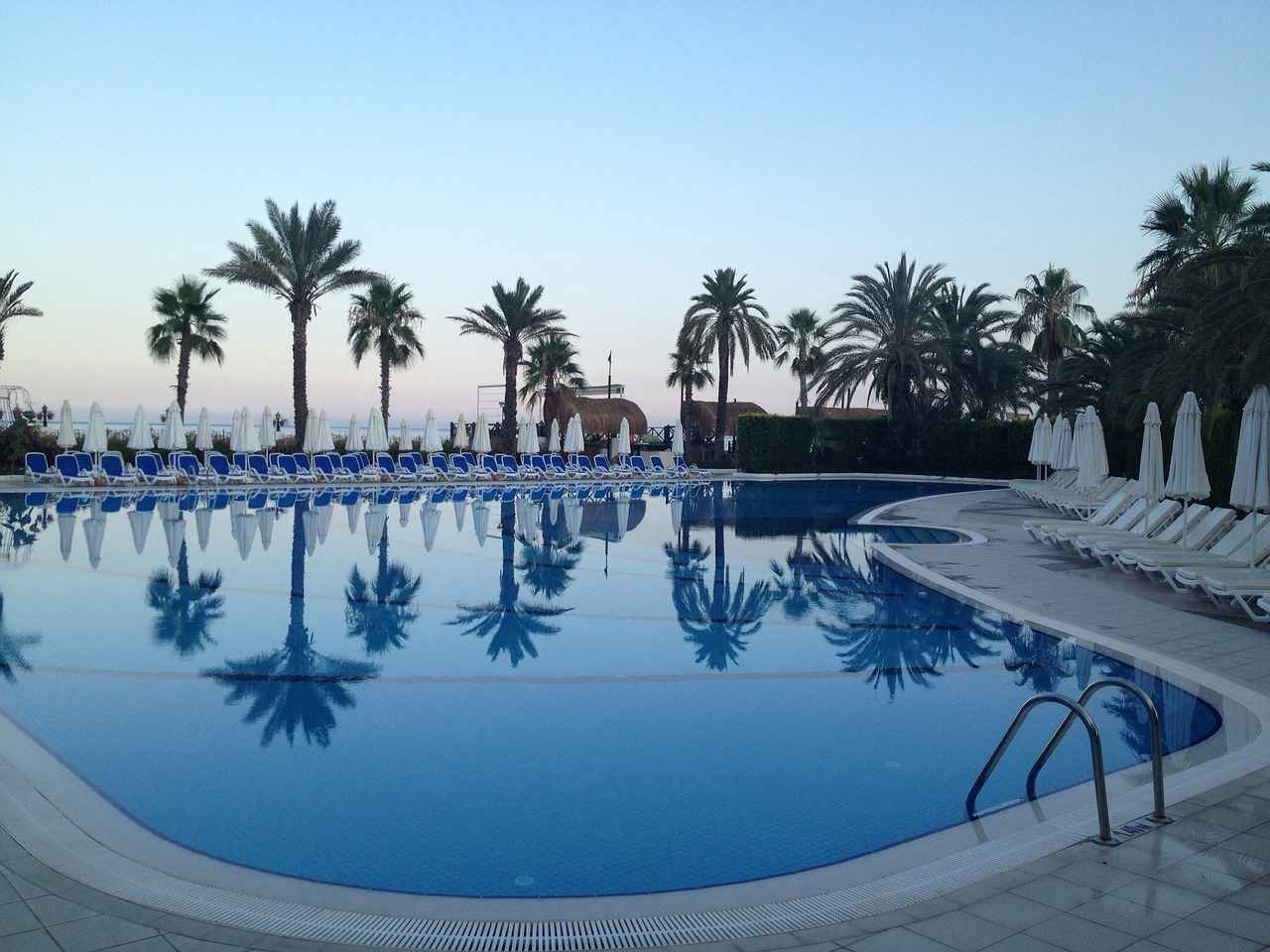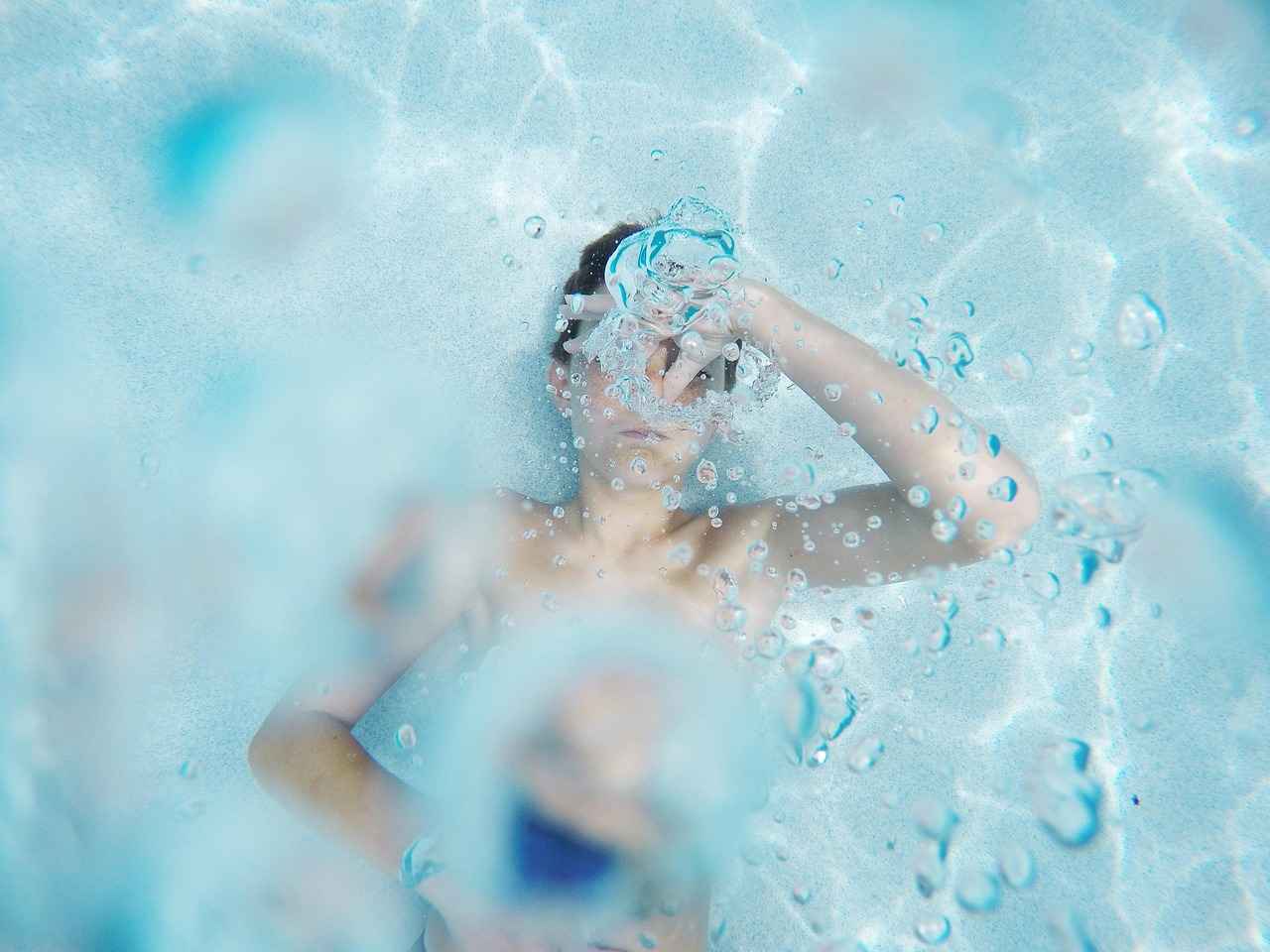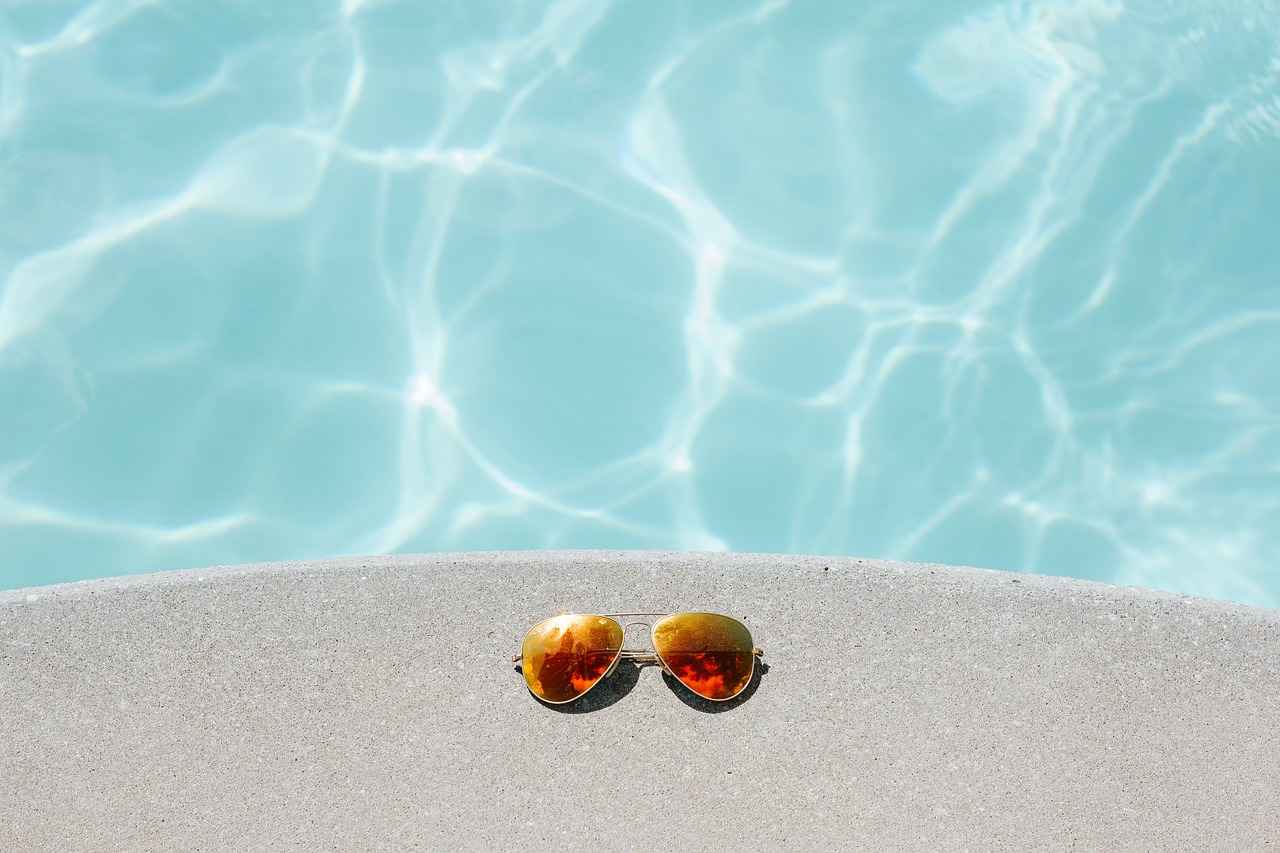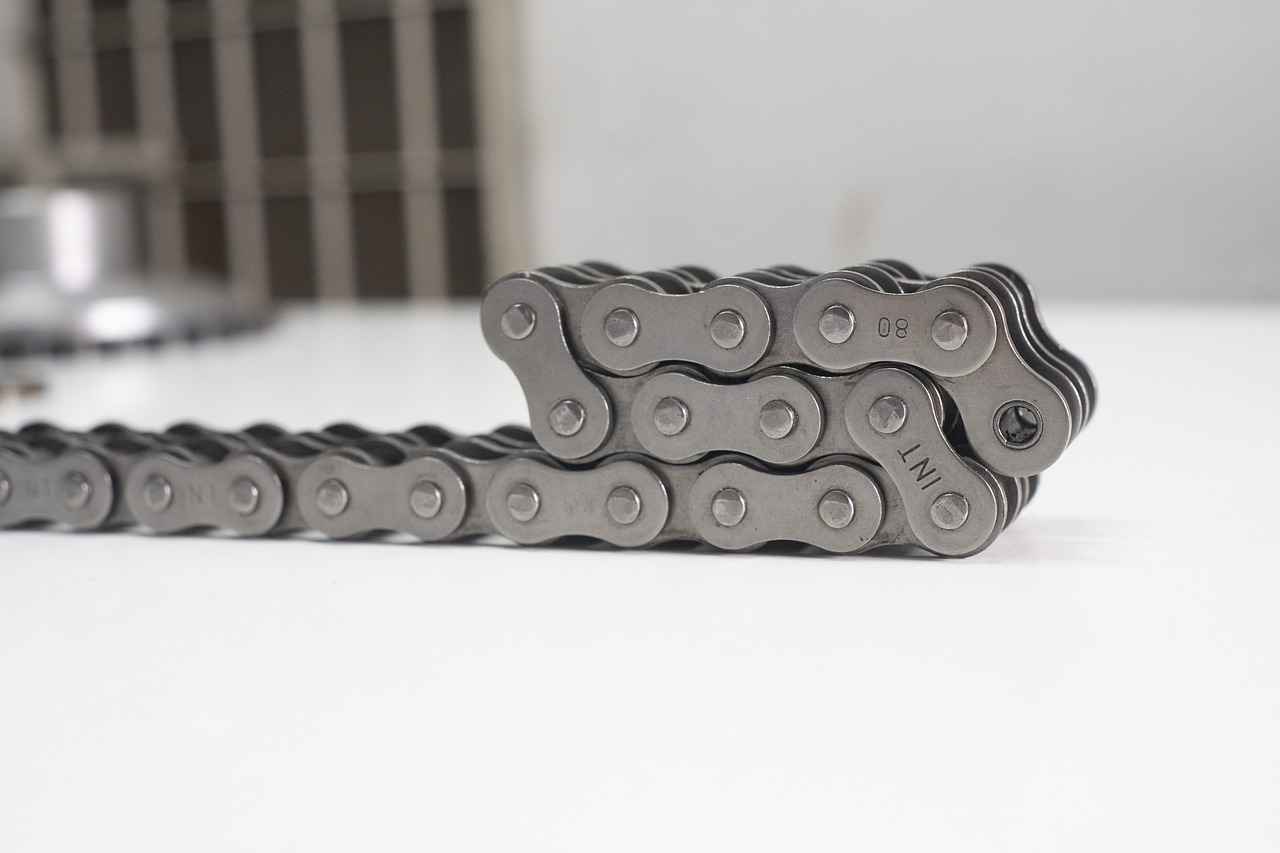This article provides practical tips and insights for pool owners seeking to effectively increase free chlorine levels, ensuring a safe and healthy swimming environment.
Maintaining the right level of free chlorine in your pool is essential for ensuring a clean and enjoyable swimming experience. Free chlorine is the active form of chlorine that works to disinfect and sanitize the water, making it crucial for the health of swimmers. In this article, we will explore the importance of free chlorine, how to test and raise its levels, and best practices for ongoing maintenance.
- Understanding Free Chlorine in Pools: Free chlorine is vital for eliminating harmful bacteria and contaminants, ensuring that your pool remains safe for use.
- Why is Free Chlorine Important? It not only disinfects but also prevents algae growth, maintaining the overall health of your pool.
Health Benefits of Proper Chlorination: Maintaining adequate free chlorine levels can help prevent waterborne illnesses, providing a safe environment for all users, especially children and those with weakened immune systems.
Preventing Algae Growth: Proper chlorination inhibits algae growth, which can turn your pool green and make it uninviting. Regular monitoring is essential to prevent this issue.
Enhancing Water Clarity: Free chlorine helps keep the water clear, improving the aesthetic appeal of your pool and enhancing the overall swimming experience.
Signs of Low Free Chlorine Levels: Recognizing the signs of low free chlorine is crucial for timely intervention. Common indicators include cloudy water, unpleasant odors, and increased algae growth.
How to Test Free Chlorine Levels: Regular testing is vital for pool maintenance. Various methods exist, including:
- Using Test Strips: Convenient for quick assessments, providing instant results.
- Liquid Test Kits: More accurate, allowing for detailed water analysis.
Methods to Increase Free Chlorine Levels: There are several effective strategies to raise free chlorine levels:
- Adding Chlorine Tablets: These dissolve slowly, providing a steady release of chlorine.
- Using Liquid Chlorine Solutions: Ideal for quick adjustments, especially after heavy use or rain.
Adjusting pH Levels for Effective Chlorination: The ideal pH range for pools is between 7.2 and 7.8, which facilitates optimal chlorine performance. High pH levels can significantly reduce chlorine’s effectiveness.
Lowering pH with Acid: Using muriatic acid or sodium bisulfate can effectively lower pH levels, enhancing chlorine’s ability to disinfect and maintain water clarity.
Best Practices for Chlorine Maintenance: Establishing a routine for chlorine maintenance is key to long-term pool health. Regular checks and adjustments can prevent problems before they arise.
- Regular Testing Schedule: Setting a consistent testing schedule helps maintain stable chlorine levels. Weekly testing is recommended, especially during peak swimming seasons.
- Monitoring Environmental Factors: Factors such as sunlight, rain, and pool usage can affect chlorine levels. Being aware of these influences allows for timely adjustments.
By following these guidelines, pool owners can ensure that their swimming environments are not only enjoyable but also safe for all users. Regular maintenance and monitoring of free chlorine levels will contribute to a healthier pool experience.

Understanding Free Chlorine in Pools
Free chlorine is a critical component in maintaining the sanitation of swimming pools. It serves as a powerful disinfectant that effectively eliminates harmful bacteria and contaminants, ensuring a safe swimming environment for all users. Without adequate levels of free chlorine, pools can become breeding grounds for pathogens, leading to potential health risks.
Free chlorine works by breaking down organic materials and killing microorganisms that can cause waterborne illnesses. This includes bacteria such as E. coli and viruses that can thrive in untreated water. Maintaining proper free chlorine levels not only protects swimmers but also enhances the overall quality of the water.
In addition to disinfection, free chlorine plays a vital role in preventing algae growth. Algae can quickly turn a pool green and uninviting, making it essential to monitor chlorine levels regularly to prevent such issues. Proper chlorination helps maintain a clear and sparkling pool, enhancing the aesthetic appeal and ensuring a pleasant swimming experience.
Moreover, free chlorine contributes to the clarity of pool water. Clear water not only looks more inviting but also signifies a well-maintained pool. When free chlorine levels are adequate, it can help eliminate cloudy water caused by contaminants and debris, thus improving visibility and enjoyment for swimmers.
Recognizing the signs of low free chlorine levels is crucial for timely intervention. Common indicators include cloudy water, unpleasant odors, and increased algae growth. If you notice any of these signs, it is essential to test the chlorine levels immediately and take appropriate action.
To maintain optimal free chlorine levels, regular testing is necessary. Various methods exist for testing chlorine levels, including test strips and liquid test kits. Test strips are a convenient option for quick assessments, providing instant results that allow pool owners to make immediate adjustments if necessary. On the other hand, liquid test kits offer more accurate readings and can analyze multiple water parameters, including pH and total chlorine, giving a comprehensive overview of water quality.
There are several effective strategies to raise free chlorine levels in your pool. One popular method is using chlorine tablets, which dissolve slowly and release chlorine steadily into the water. Alternatively, liquid chlorine solutions provide a fast-acting option for quick adjustments, especially after heavy pool use or rain.
Maintaining proper pH levels is also crucial for chlorine effectiveness. The ideal pH range for pools is between 7.2 and 7.8, as this range facilitates optimal chlorine performance. High pH levels can significantly reduce chlorine’s effectiveness, making it essential to regularly monitor and adjust pH levels to ensure proper sanitization.
In conclusion, understanding the importance of free chlorine in pools is vital for every pool owner. By ensuring adequate free chlorine levels, you can protect the health of swimmers, prevent algae growth, and maintain clear and inviting water. Regular testing and appropriate adjustments will help you achieve a safe and enjoyable swimming environment.

Why is Free Chlorine Important?
Free chlorine is a fundamental component in the maintenance of swimming pools, playing a critical role in ensuring water quality and safety. Understanding its importance is essential for every pool owner who desires a clean and inviting swimming environment.
Disinfection and Safety
The primary function of free chlorine is to act as a disinfectant. It effectively kills harmful bacteria, viruses, and other pathogens that can thrive in pool water. By maintaining appropriate levels of free chlorine, pool owners can significantly reduce the risk of waterborne illnesses, ensuring a safe swimming experience for everyone, particularly children and those with compromised immune systems.
Preventing Algae Growth
In addition to its disinfecting properties, free chlorine plays a vital role in preventing algae growth. Algae can quickly turn a pool from a refreshing oasis into a green, uninviting body of water. By keeping free chlorine levels within the recommended range, pool owners can inhibit the growth of algae, ensuring that their pool remains clear and attractive.
Enhancing Water Clarity
Free chlorine also contributes to water clarity. When chlorine levels are adequate, it helps to break down organic matter and contaminants that can cloud the water. This not only improves the aesthetic appeal of the pool but also enhances the overall swimming experience. Clear water is more inviting and encourages more frequent use of the pool.
Maintaining Chemical Balance
Maintaining the right levels of free chlorine is essential for achieving a balanced pool chemistry. Chlorine interacts with other chemicals in the pool, including pH and alkalinity. An imbalance can lead to ineffective sanitization and other water quality issues. Regularly monitoring and adjusting free chlorine levels ensures that the pool remains in optimal condition.
Signs of Low Free Chlorine Levels
Recognizing the signs of low free chlorine is crucial for timely intervention. Common indicators include:
- Cloudy water
- Unpleasant odors
- Increased algae growth
- Skin irritation among swimmers
Addressing these issues promptly can help restore the pool’s condition and maintain a safe swimming environment.
Health Benefits of Proper Chlorination
Proper chlorination not only protects swimmers from potential health risks but also promotes a healthy swimming environment. Regularly maintaining free chlorine levels can prevent the spread of diseases and enhance the overall enjoyment of the pool.
Conclusion
In summary, free chlorine is indispensable for maintaining pool health and user safety. Its roles in disinfection, algae prevention, and water clarity make it a vital component of pool maintenance. By understanding the importance of free chlorine, pool owners can take proactive steps to ensure a safe and enjoyable swimming experience.
Health Benefits of Proper Chlorination
Maintaining a safe and enjoyable swimming environment is paramount for pool owners. One of the key factors in achieving this is ensuring adequate levels of free chlorine in the pool water. Free chlorine serves as a powerful disinfectant, effectively combating harmful microorganisms that can lead to waterborne illnesses. This is especially critical for vulnerable populations such as children and individuals with weakened immune systems, who are at a higher risk of infection.
Free chlorine is essential for ensuring that pool water remains safe for all users. When free chlorine levels are properly maintained, it helps to:
- Eliminate Pathogens: Free chlorine acts as a sanitizer, killing bacteria, viruses, and other pathogens that can thrive in pool water. This is crucial for preventing illnesses such as gastroenteritis, which can arise from exposure to contaminated water.
- Reduce Chemical Irritation: Proper chlorination minimizes the presence of harmful contaminants that can cause skin and eye irritation. By keeping free chlorine levels in check, swimmers can enjoy a more comfortable experience.
- Enhance Overall Water Quality: Free chlorine not only disinfects but also helps to maintain clear and pleasant-looking water. When chlorine levels are appropriate, the water remains inviting, encouraging more frequent use of the pool.
In addition to these health benefits, maintaining adequate free chlorine levels can also:
- Prevent Algae Growth: Algae can quickly turn a pool green and uninviting. By ensuring that free chlorine levels are optimal, pool owners can inhibit algae growth and maintain a clean swimming environment.
- Improve Water Clarity: Clear water is not only aesthetically pleasing but also indicates that the pool is properly sanitized. This clarity enhances the overall swimming experience and provides peace of mind to users.
Recognizing the signs of low free chlorine levels is essential for timely intervention. Common indicators include:
- Cloudy water, which can suggest the presence of contaminants.
- Unpleasant odors, indicating that the chlorine is not effectively sanitizing the water.
- Increased algae growth, which can compromise water quality.
To ensure that free chlorine levels remain within the recommended range, regular testing is crucial. Various methods, such as test strips and liquid test kits, can help pool owners monitor chlorine levels effectively. Test strips offer a quick and convenient way to check levels, while liquid test kits provide a more comprehensive analysis of water quality.
In summary, maintaining adequate free chlorine levels is vital for a safe swimming experience. By understanding the importance of proper chlorination, pool owners can take proactive steps to protect their families and guests from waterborne illnesses. Regular testing, monitoring, and adjustments will ensure that your pool remains a safe and enjoyable place for everyone.
Preventing Algae Growth
Algae growth in swimming pools is a common issue that can transform a once-inviting oasis into a murky, green mess. This not only affects the aesthetic appeal of your pool but also poses health risks to swimmers. Proper chlorination is essential for inhibiting algae growth, ensuring that your pool remains clean, safe, and enjoyable for everyone.
When chlorine levels are insufficient, algae can thrive, leading to cloudy water and unpleasant odors. This is why regular monitoring of chlorine levels is crucial. By maintaining appropriate free chlorine levels, you can significantly reduce the chances of algae proliferation.
Free chlorine acts as a powerful disinfectant, effectively killing off algae spores before they have the chance to multiply. It is recommended to keep free chlorine levels between 1 to 3 parts per million (ppm) for optimal effectiveness. This range not only helps in controlling algae but also eliminates harmful bacteria and pathogens that can pose health risks.
In addition to chlorination, there are several other strategies to prevent algae growth:
- Regular Cleaning: Skimming debris from the surface, vacuuming the pool floor, and brushing the walls can help eliminate algae spores and prevent them from settling.
- Filtration System Maintenance: Ensure your pool’s filtration system is functioning optimally. A well-maintained filter helps to circulate water effectively, reducing algae buildup.
- pH Level Management: Keeping the pH levels between 7.2 and 7.8 not only enhances chlorine effectiveness but also discourages algae growth.
- Shock Treatments: Regularly shocking your pool with chlorine can help to reset chlorine levels and eliminate any existing algae before it becomes a larger problem.
Another important factor to consider is the influence of environmental conditions on chlorine levels. For instance, sunlight can rapidly deplete chlorine, so it’s wise to consider using a stabilizer to protect chlorine from UV rays. Additionally, heavy rainfall can dilute chlorine levels, necessitating a post-rain check on your pool’s chemical balance.
Investing in an algae prevention strategy not only enhances the longevity of your pool but also ensures a safe and enjoyable swimming experience. By incorporating these practices into your regular pool maintenance routine, you can create a welcoming environment that remains clean and clear throughout the swimming season.
In summary, preventing algae growth requires a multifaceted approach that includes proper chlorination, regular maintenance, and environmental awareness. By prioritizing these factors, pool owners can effectively maintain a healthy swimming environment and enjoy their pools without the worry of algae-related issues.
Enhancing Water Clarity
Maintaining crystal clear water in your pool is not just about aesthetics; it plays a crucial role in ensuring a safe and enjoyable swimming experience. One of the primary agents responsible for achieving this clarity is free chlorine. This essential chemical compound not only disinfects the water but also helps in keeping it visually appealing.
When free chlorine levels are adequately maintained, they effectively combat harmful bacteria and other contaminants that may cloud the water. This process not only improves the visual quality of the pool but also enhances the overall swimming experience. Swimmers are more likely to enjoy their time in a pool with clear, inviting water, which contributes to a more pleasant atmosphere.
Moreover, clear water indicates that the pool is well-maintained, which can encourage more frequent use. When potential swimmers see a sparkling pool, they are more inclined to dive in, knowing that the environment is clean and safe. In contrast, cloudy or discolored water can deter users, making the pool seem uninviting and neglected.
In addition to aesthetics, clear water is indicative of proper chemical balance. When free chlorine levels are optimal, it helps to prevent the growth of algae and other microorganisms that can lead to murky water. Algae blooms not only affect water clarity but can also create slippery surfaces, posing safety risks for swimmers.
To maintain water clarity, regular testing of free chlorine levels is essential. Pool owners should monitor these levels frequently, especially during peak usage times or after heavy rainfall. If free chlorine levels drop below the recommended range, it can lead to a decline in water quality, making it vital to take corrective action promptly.
Incorporating a routine of adding chlorine tablets or liquid chlorine can help maintain these levels. Chlorine tablets dissolve slowly, providing a steady release of chlorine, while liquid chlorine can quickly elevate levels when needed. Both methods are effective, but the choice depends on individual pool maintenance preferences and needs.
Additionally, keeping the pool clean by regularly skimming debris, vacuuming, and brushing the walls contributes significantly to water clarity. A clean pool is less likely to develop cloudy water, allowing the free chlorine to work more effectively.
Lastly, it’s important to consider the impact of environmental factors on chlorine levels. Sunlight, for example, can break down chlorine, necessitating more frequent additions. Understanding these dynamics can help pool owners maintain optimal water clarity and ensure a pleasant swimming environment.
In summary, enhancing water clarity through proper management of free chlorine levels is essential for both the aesthetic appeal and health of your pool. By implementing regular testing and maintenance practices, pool owners can create a safe, inviting space for swimmers, ensuring that their pool remains a source of enjoyment throughout the swimming season.
Signs of Low Free Chlorine Levels
Maintaining a safe and healthy swimming environment is crucial for every pool owner, and one of the key aspects of this maintenance is monitoring free chlorine levels. Recognizing the signs of low free chlorine levels is essential for timely intervention, as it can prevent potential health risks and ensure a pleasant swimming experience.
Some of the most common indicators of low free chlorine include:
- Cloudy Water: When chlorine levels drop, water clarity can diminish, resulting in cloudy or murky water. This not only looks unappealing but can also indicate the presence of harmful microorganisms.
- Unpleasant Odors: A strong chlorine smell is often associated with high chlorine levels; however, if the water smells musty or like algae, it may signify that free chlorine is insufficient to combat contaminants.
- Increased Algae Growth: Algae thrives in water with inadequate chlorine levels. If you notice green or brown patches forming in your pool, it’s a clear sign that your free chlorine levels are too low.
- Skin Irritation: Swimmers may experience skin rashes or irritation when chlorine levels are insufficient. This can be particularly concerning for children and individuals with sensitive skin.
- Frequent Filtration Issues: If your pool’s filtration system is struggling to keep up with debris and contaminants, it may be due to low chlorine levels failing to sanitize the water effectively.
Addressing these signs promptly is essential. By increasing free chlorine levels, you can restore water clarity, eliminate odors, and prevent algae growth. Regular testing of chlorine levels, ideally at least once a week, can help you catch these issues early. Utilizing test strips or liquid test kits will provide accurate readings and help guide your maintenance efforts.
Moreover, environmental factors such as heavy rainfall, intense sunlight, and increased pool usage can contribute to fluctuations in chlorine levels. Being proactive and adjusting chlorine levels based on these factors can significantly enhance the overall health of your pool.
In conclusion, staying vigilant about the signs of low free chlorine levels is vital for maintaining a safe and inviting swimming environment. By recognizing these indicators early, you can take necessary actions to ensure your pool remains a clean and enjoyable space for everyone.

How to Test Free Chlorine Levels
Testing free chlorine levels in your pool is a vital aspect of pool maintenance, ensuring a safe and enjoyable swimming experience. Regular monitoring helps to maintain the balance of chemicals in the water, preventing issues such as algae growth and waterborne illnesses. In this section, we will explore various methods for testing free chlorine levels, their benefits, and how to choose the right one for your needs.
There are several methods available for testing free chlorine levels, each with its own advantages. Understanding these options can help you select the most suitable method for your pool.
- Test Strips: Test strips are a popular choice for pool owners due to their convenience and ease of use. Simply dip the strip into the water for a few seconds, then compare the color change to the provided chart. This method offers instant results, making it ideal for quick checks.
- Liquid Test Kits: For those seeking more accuracy, liquid test kits are an excellent option. These kits typically include reagents that you mix with a water sample, allowing for precise measurement of free chlorine levels. This method can also provide insights into other important parameters, such as pH and total chlorine.
- Digital Testers: Digital testers represent the latest innovation in pool testing technology. These devices provide accurate readings with minimal effort. Simply insert the probe into the water, and the tester displays the results on a screen, making it easy to monitor chlorine levels regularly.
Regular testing of free chlorine levels is essential for several reasons:
- Health and Safety: Maintaining appropriate chlorine levels is crucial for preventing waterborne illnesses. Low chlorine levels can lead to the proliferation of harmful bacteria and viruses, posing risks to swimmers.
- Water Clarity: Proper levels of free chlorine help maintain clear water, enhancing the overall aesthetic of your pool. Cloudy water can deter swimmers and indicate potential sanitation issues.
- Algae Prevention: Regular monitoring allows for early detection of low chlorine levels, which can lead to algae growth. By addressing this promptly, you can avoid costly and time-consuming cleanup efforts.
Establishing a routine testing schedule is crucial for effective pool maintenance. It is recommended to test chlorine levels at least once a week, with more frequent checks during peak swimming seasons or after heavy rainfall. Additionally, you should test after significant pool usage, such as parties or gatherings, to ensure that the water remains safe and clean.
Understanding how to interpret your test results is just as important as testing itself. The ideal free chlorine level for pools typically ranges between 1 to 3 parts per million (ppm). If your results fall below this range, it’s essential to take action to raise chlorine levels promptly.
If your tests indicate low free chlorine levels, there are several methods to increase them:
- Chlorine Tablets: Adding chlorine tablets to your pool’s skimmer or floating dispenser provides a slow and steady release of chlorine.
- Liquid Chlorine: For a quick boost in chlorine levels, consider using liquid chlorine, which dissolves rapidly and increases levels almost immediately.
In conclusion, regular testing of free chlorine levels is a fundamental practice for pool owners. By utilizing the right testing methods and maintaining optimal chlorine levels, you can ensure a safe, clean, and inviting swimming environment for all.
Using Test Strips
When it comes to maintaining a clean and safe swimming pool, testing the water regularly is essential. One of the most convenient methods for assessing chlorine levels is by using test strips. These handy tools are designed to provide quick and accurate results, making them a favorite among pool owners.
Test strips are user-friendly and require minimal effort to use. Simply dip a strip into the pool water for a few seconds, remove it, and compare the color change to the chart provided on the packaging. This instant feedback allows pool owners to make immediate adjustments to chlorine levels if necessary, ensuring that the water remains safe for swimming.
One of the key benefits of using test strips is their speed. Unlike liquid test kits, which may require more time to prepare and analyze, test strips deliver results in less than a minute. This is particularly beneficial for those who may not have extensive experience with pool maintenance. Additionally, they are portable and can easily be stored in a poolside kit for quick access whenever needed.
However, it is important to note that while test strips are convenient, they may not always provide the same level of accuracy as liquid test kits. Factors such as water temperature and the presence of other chemicals can sometimes affect the results. Therefore, for a more comprehensive analysis, pool owners might consider using liquid test kits on a regular basis in conjunction with test strips.
Another advantage of test strips is their ability to measure not only free chlorine but also other vital parameters such as pH levels and total alkalinity. This multi-functionality makes them a valuable tool for maintaining overall water quality. By regularly monitoring these levels, pool owners can prevent issues such as algae growth and cloudy water.
For those who are new to pool maintenance, it is advisable to familiarize oneself with the ideal ranges for chlorine and pH levels. Free chlorine should typically be maintained between 1-3 ppm (parts per million) for optimal sanitation. If test strips indicate lower levels, immediate action should be taken to raise chlorine levels, either by adding chlorine tablets or liquid solutions.
In conclusion, test strips are an excellent choice for pool owners looking for a quick and efficient way to monitor chlorine levels. Their ease of use, speed, and ability to measure multiple parameters make them a practical addition to any pool maintenance routine. Regular testing with these strips can help ensure a safe and enjoyable swimming experience for everyone.
- Convenience: Easy to use and quick results.
- Multi-functional: Measures pH and alkalinity as well.
- Immediate feedback: Allows for timely adjustments to chlorine levels.
By incorporating test strips into your pool maintenance routine, you can enhance the health and clarity of your pool water, providing a safe environment for all swimmers.
Liquid Test Kits Explained
When it comes to maintaining a clean and safe swimming pool, accurate water testing is essential. One of the most effective tools for this purpose is the liquid test kit. Unlike traditional test strips, which provide a quick but often less precise reading, liquid test kits offer a more detailed analysis of the water’s chemical composition.
Liquid test kits are favored by many pool owners for several reasons:
- Greater Accuracy: Liquid test kits typically deliver more precise results than test strips. They allow for a thorough analysis of various water parameters, ensuring that pool owners can make informed decisions regarding their pool maintenance.
- Comprehensive Testing: These kits can measure multiple factors, including pH levels, total chlorine, and other important chemicals. This comprehensive overview is crucial for maintaining optimal water quality.
- Cost-Effectiveness: While the initial investment might be higher than test strips, liquid test kits often prove to be more economical in the long run due to their accuracy and reliability.
Liquid test kits generally consist of:
- Reagents: These are the chemical solutions that react with the water sample to produce a color change, indicating the concentration of various chemicals.
- Test Vials: These are used to hold the water sample during testing. They are often designed to be easy to read, allowing for quick interpretation of results.
- Color Chart: Most kits come with a color chart to help users compare the resulting color of the water sample with standard readings.
Using a liquid test kit is straightforward:
- Collect a water sample from your pool. It’s best to take the sample from elbow-deep water to ensure accuracy.
- Follow the instructions provided with your kit, adding the appropriate reagents to the water sample.
- Wait for the designated reaction time, usually a few minutes, for the color change to occur.
- Compare the resulting color with the provided color chart to determine the chemical levels in your pool.
Regular testing with a liquid test kit can help pool owners:
- Prevent Issues: By monitoring chemical levels consistently, pool owners can identify potential problems before they escalate, such as algae growth or imbalance in pH levels.
- Ensure Safety: Proper chlorine levels are crucial for eliminating harmful bacteria, making regular testing vital for maintaining a safe swimming environment.
- Enhance Water Clarity: A well-maintained pool with balanced chemicals is not only safer but also more visually appealing, encouraging more frequent use.
In summary, liquid test kits are an invaluable tool for pool owners who prioritize accuracy and comprehensive analysis in their water testing. By understanding how to effectively use these kits and the importance of regular testing, pool owners can ensure a clean, safe, and enjoyable swimming experience.

Methods to Increase Free Chlorine Levels
Maintaining appropriate free chlorine levels in your swimming pool is essential for ensuring a safe and enjoyable swimming experience. Free chlorine is the active form of chlorine that effectively kills bacteria, viruses, and other harmful microorganisms. If your pool’s free chlorine levels are low, it’s crucial to take action promptly. Below are some effective methods to increase free chlorine levels in your pool.
Before diving into the methods, it’s important to understand why maintaining adequate free chlorine levels is vital. Free chlorine not only sanitizes the water but also prevents algae growth, which can lead to murky water and unpleasant odors. Ensuring optimal free chlorine levels is key to providing a clean and safe swimming environment.
Chlorine tablets are a popular and effective method for increasing free chlorine levels. These tablets dissolve slowly in the water, releasing chlorine gradually over time. This steady release helps maintain consistent chlorine levels, making it easier for pool owners to manage sanitation. It’s advisable to use a float or a chlorine feeder to distribute the tablets evenly throughout the pool.
Liquid chlorine solutions are another effective option for raising free chlorine levels quickly. These solutions dissolve instantly in water, providing immediate results. They are particularly useful after heavy pool usage or following rainstorms, which can dilute chlorine levels. When using liquid chlorine, it’s important to follow the manufacturer’s instructions for dosage to avoid over-chlorination.
For a rapid increase in free chlorine levels, shock treatment is often recommended. This involves adding a high dose of chlorine to the pool to quickly elevate the chlorine levels. Shock treatments are especially useful after events like pool parties or heavy rainfall. It is advisable to perform shock treatments in the evening to prevent the sun from dissipating the chlorine too quickly.
Chlorine granules are another effective method for increasing free chlorine levels. These granules dissolve quickly in water and can be added directly to the pool. They are a versatile option for pool owners who prefer not to use tablets or liquid solutions. Always ensure to pre-dissolve the granules in a bucket of water before adding them to the pool to avoid damaging the pool surface.
To maximize the effectiveness of chlorine, maintaining the correct pH levels is crucial. The ideal pH range for swimming pools is between 7.2 and 7.8. If the pH is too high, chlorine becomes less effective at sanitizing the water. Regularly testing and adjusting pH levels can significantly enhance chlorine efficiency.
Environmental factors such as sunlight, rainfall, and pool usage can impact free chlorine levels. For instance, sunlight can rapidly degrade chlorine, especially during hot summer days. To counteract this, consider using a chlorine stabilizer to protect chlorine from UV rays. Additionally, heavy rainfall can dilute chlorine levels, necessitating an increase in chlorine to maintain sanitation.
Establishing a routine for testing and maintaining chlorine levels is essential for pool health. Regular testing should be conducted at least once a week, especially during peak swimming seasons. By keeping a close eye on chlorine levels, pool owners can make timely adjustments, ensuring a safe and inviting swimming environment for all.
In conclusion, raising free chlorine levels in your pool can be achieved through various methods, including adding chlorine tablets, using liquid chlorine solutions, and performing shock treatments. By understanding the importance of free chlorine and implementing these strategies, pool owners can maintain a clean, safe, and enjoyable swimming experience.
Adding Chlorine Tablets
When it comes to maintaining a clean and safe swimming pool, chlorine tablets are a widely used solution for increasing free chlorine levels. These tablets offer a convenient and effective way to ensure that your pool remains sanitized and healthy for all users.
Chlorine tablets are designed to dissolve slowly in water, providing a steady release of chlorine over time. This gradual dissolution helps maintain consistent chlorine levels, which is essential for effective disinfection. Unlike other forms of chlorine, such as granules or liquid, tablets are less prone to rapid fluctuations in concentration, making them easier to manage.
Chlorine tablets are typically made from trichloroisocyanuric acid (TCCA), a compound that effectively releases chlorine when dissolved in water. As the tablets dissolve, they release chlorine, which then works to kill bacteria, viruses, and other harmful microorganisms present in the pool water. This process not only keeps the water clean but also helps to prevent the growth of algae, ensuring a clear and inviting swimming environment.
- Ease of Use: Chlorine tablets are simple to use and can be added directly to the pool’s skimmer, floater, or dispenser.
- Long-lasting: Their slow-dissolving nature means fewer applications are required compared to other chlorine forms.
- Stability: Chlorine tablets are more stable in sunlight, reducing the loss of chlorine due to UV exposure.
- Cost-effective: While the initial investment may be higher, the long-lasting nature of tablets can lead to savings over time.
To maximize the effectiveness of chlorine tablets, it’s important to follow a few guidelines:
- Choose the Right Size: Tablets come in various sizes, typically 1 inch or 3 inches. Select the size that fits your pool’s needs.
- Use a Dispenser: Employ a floating dispenser or an inline chlorinator to ensure even distribution of chlorine throughout the pool.
- Regular Monitoring: Test the water regularly to ensure free chlorine levels remain within the ideal range of 1-3 ppm (parts per million).
- Store Properly: Keep chlorine tablets in a cool, dry place away from direct sunlight to maintain their effectiveness.
While chlorine tablets offer numerous benefits, they are not without their drawbacks. One concern is the potential for chlorine lock, which can occur if too many stabilizers are present in the water. This condition can make it difficult to maintain adequate free chlorine levels. Additionally, improper storage or handling can lead to chemical reactions that may pose safety risks.
In summary, chlorine tablets are a popular and effective choice for pool owners looking to maintain optimal free chlorine levels. Their ease of use, long-lasting properties, and ability to provide consistent disinfection make them a valuable tool in pool maintenance. By following best practices for their use and monitoring water quality regularly, pool owners can ensure a safe and enjoyable swimming experience.
Using Liquid Chlorine Solutions
When it comes to maintaining a clean and safe swimming pool, liquid chlorine solutions serve as a highly effective method for raising free chlorine levels quickly. This fast-acting option is particularly beneficial after instances of heavy pool use, such as parties or gatherings, or following rainstorms, which can dilute chlorine levels and introduce contaminants into the water.
One of the primary advantages of using liquid chlorine is its rapid dissolving properties. Unlike solid chlorine forms, which can take time to dissolve and distribute evenly, liquid chlorine is immediately effective upon addition to the pool. This characteristic makes it an ideal choice for pool owners who need to make quick adjustments to ensure water safety and clarity.
Additionally, liquid chlorine is versatile and can be used in various situations. For instance, if you notice signs of low chlorine levels—such as cloudy water or unpleasant odors—adding liquid chlorine can provide a swift remedy. This solution not only raises chlorine levels but also helps to eliminate bacteria and other harmful microorganisms that may be present in the water.
| Advantages of Liquid Chlorine | Considerations |
|---|---|
| Fast-acting and effective | Requires careful handling due to its concentrated nature |
| Instantly raises chlorine levels | Can affect pH levels if not monitored |
| Easy to use for quick fixes | May require frequent applications in high-use situations |
When using liquid chlorine, it is essential to follow the manufacturer’s instructions regarding dosage, as adding too much can lead to an imbalance in water chemistry. Regular testing of chlorine levels after application is recommended to ensure that they remain within the ideal range of 1-3 ppm (parts per million) for safe swimming.
Furthermore, while liquid chlorine is a powerful tool for sanitization, it is important to consider its interaction with other pool chemicals. For instance, if the pH levels are not within the optimal range of 7.2 to 7.8, the effectiveness of chlorine can be diminished. Therefore, it is wise to monitor and adjust pH levels accordingly when using liquid chlorine solutions.
In summary, liquid chlorine solutions are an effective and efficient way to enhance free chlorine levels in your pool. Their fast-acting nature makes them ideal for quick fixes after heavy usage or weather-related incidents. By understanding how to properly use and monitor liquid chlorine, pool owners can maintain a safe and inviting swimming environment for everyone.

Adjusting pH Levels for Effective Chlorination
Maintaining the right pH levels in your pool is essential for maximizing the effectiveness of chlorine. The ideal pH range for swimming pools is between 7.2 and 7.8. This range not only ensures that chlorine works efficiently but also contributes to the overall comfort and safety of swimmers.
The pH scale measures how acidic or basic a solution is, ranging from 0 to 14. A pH of 7 is considered neutral. Values below 7 indicate acidity, while values above 7 indicate alkalinity. For pool water, maintaining a slightly alkaline environment is crucial for several reasons:
- Chlorine Efficiency: Chlorine is most effective at killing bacteria and pathogens when pH levels are within the ideal range.
- Comfort for Swimmers: Proper pH levels prevent skin and eye irritation, making swimming more enjoyable.
- Equipment Longevity: Balanced pH helps protect pool equipment from corrosion and scaling.
When pH levels exceed 7.8, chlorine becomes less effective. This inefficiency can lead to various issues, including:
- Increased Algae Growth: High pH creates a favorable environment for algae, making it harder to maintain clear water.
- Cloudy Water: Elevated pH can result in cloudy water, detracting from the pool’s appearance.
- Chlorine Lock: This condition occurs when high pH levels lead to the formation of chloramines, which can render chlorine ineffective.
If your pool’s pH levels are too high, there are several methods to lower them:
- Muriatic Acid: This strong acid is commonly used to lower pH levels quickly. It should be added carefully, following manufacturer instructions.
- Sodium Bisulfate: Also known as dry acid, this is a safer alternative to muriatic acid and can effectively reduce pH levels.
- Water Dilution: In some cases, partially draining and refilling the pool with fresh water can help lower pH levels.
To ensure optimal pH and chlorine levels, regular testing is vital. Pool owners should:
- Test Water Weekly: Use test strips or liquid testing kits to check pH and chlorine levels at least once a week.
- Adjust as Necessary: Based on test results, make necessary adjustments to maintain pH within the ideal range.
- Consider Environmental Factors: Rain, sunlight, and pool usage can affect pH levels. Be prepared to adjust accordingly.
Maintaining proper pH levels not only enhances chlorine effectiveness but also contributes to a healthier swimming environment. Some key benefits include:
- Enhanced Water Clarity: Balanced pH leads to clearer water, improving the overall aesthetic of the pool.
- Reduced Chemical Usage: When pH is properly managed, less chlorine is needed, saving money on pool maintenance.
- Improved Swimmer Comfort: Swimmers are less likely to experience irritation or discomfort, encouraging more frequent use of the pool.
In conclusion, adjusting pH levels is a critical aspect of effective chlorination. By regularly monitoring and maintaining pH within the ideal range, pool owners can ensure a safe, clean, and enjoyable swimming experience for everyone.
Impact of High pH on Chlorine Efficiency
Maintaining a safe and clean swimming pool requires careful attention to various chemical levels, particularly free chlorine and pH. One crucial factor that pool owners must consider is the impact of high pH levels on chlorine efficiency. When pH levels rise above the ideal range, chlorine’s ability to effectively sanitize the water can be significantly compromised.
Chlorine is a powerful disinfectant that works best within a specific pH range, typically between 7.2 and 7.8. When pH levels exceed this range, particularly when they reach high levels, chlorine becomes less effective at killing bacteria, viruses, and other harmful contaminants. This reduction in efficacy can lead to a variety of issues, including cloudy water, unpleasant odors, and an increased risk of waterborne illnesses.
One of the primary reasons high pH levels hinder chlorine efficiency is due to the formation of chloramines. These compounds are created when chlorine reacts with organic materials in the water, such as sweat, oils, and debris. At elevated pH levels, the formation of chloramines is exacerbated, leading to a situation where the available free chlorine is bound up in these compounds instead of being available to sanitize the pool. This not only decreases the overall effectiveness of chlorine but can also result in that characteristic “chlorine smell” that many pool users find unpleasant.
To ensure that chlorine remains effective, it is essential for pool owners to regularly monitor and adjust pH levels. Testing the water at least once a week can help identify any fluctuations in pH, allowing for timely adjustments. If high pH levels are detected, various methods can be employed to lower them, such as adding muriatic acid or sodium bisulfate. These acids work by increasing the hydrogen ion concentration in the water, effectively lowering the pH and enhancing chlorine’s ability to disinfect and maintain water clarity.
In addition to regular testing and adjustments, it is also important to consider environmental factors that can influence pH levels. For instance, heavy rain can dilute pool water and alter its chemical balance, while the introduction of new water can also shift pH levels. Keeping an eye on these factors can help pool owners maintain optimal conditions for chlorine efficiency.
In summary, high pH levels pose a significant challenge to maintaining effective chlorine sanitation in pools. By understanding the relationship between pH and chlorine efficiency, pool owners can take proactive steps to ensure that their pools remain safe and enjoyable for all users. Regular testing, timely adjustments, and awareness of environmental influences are key strategies for achieving and maintaining the ideal chemical balance in pool water.
Lowering pH with Acid
Maintaining the right pH level in your swimming pool is crucial for ensuring that chlorine works effectively to sanitize the water. When pH levels are too high, chlorine becomes less effective, which can lead to a variety of problems, including algae growth and cloudy water. One effective way to lower pH levels is by using muriatic acid or sodium bisulfate.
The pH scale ranges from 0 to 14, with 7 being neutral. For swimming pools, the ideal pH range is between 7.2 and 7.8. When the pH exceeds this range, it can hinder chlorine’s ability to disinfect the water effectively. This is where the use of acids comes into play.
- Muriatic Acid: This is a highly effective solution for lowering pH levels quickly. It is a diluted form of hydrochloric acid and is commonly used in pool maintenance. However, it must be handled with care due to its corrosive nature.
- Sodium Bisulfate: Also known as dry acid, sodium bisulfate is a safer alternative to muriatic acid. It is easier to handle and less hazardous, making it a popular choice among pool owners.
1. Test the pool water to determine the current pH level.2. Calculate the amount of muriatic acid needed using pool volume and pH levels.3. Dilute the acid in a bucket of water (never add water to acid).4. Pour the mixture slowly into the deep end of the pool while the pump is running.5. Retest the pH after a few hours and make further adjustments if necessary.
1. Test the water to check the pH level.2. Refer to the product label for dosage instructions based on pool size.3. Sprinkle the sodium bisulfate evenly across the pool surface.4. Allow the pump to circulate the water for at least 4 hours before retesting.
When handling muriatic acid or sodium bisulfate, it’s vital to take appropriate safety measures:
- Always wear protective gear, including gloves and goggles.
- Work in a well-ventilated area to avoid inhaling fumes.
- Store acids in a cool, dry place, away from children and pets.
Regular testing of pH levels is essential for maintaining a balanced pool environment. It is recommended to test the pH at least once a week, or more frequently during periods of heavy use or after heavy rainfall. Keeping the pH within the ideal range not only enhances chlorine effectiveness but also contributes to the overall health of the pool.
Lowering pH levels using muriatic acid or sodium bisulfate is an effective strategy for pool owners aiming to optimize chlorine performance. By understanding the importance of pH balance and following the proper procedures for using these acids, you can maintain a safe and inviting swimming environment. Regular monitoring and adjustments will ensure that your pool remains in excellent condition, providing a refreshing oasis for you and your family.

Best Practices for Chlorine Maintenance
Maintaining a clean and safe swimming pool requires diligent attention to chlorine levels. Establishing a routine for chlorine maintenance is paramount for ensuring the long-term health of your pool. Regular checks and adjustments can prevent potential problems before they escalate, safeguarding both the water quality and the health of swimmers.
Chlorine is the backbone of pool sanitation, acting as a powerful disinfectant that eliminates harmful bacteria, viruses, and algae. However, without a consistent maintenance routine, chlorine levels can fluctuate, leading to unsafe swimming conditions. Below are some best practices for effective chlorine maintenance:
- Develop a Testing Schedule: Regular testing is essential. Aim to check chlorine levels at least once a week, and more frequently during peak usage times. This practice helps you identify any dips in chlorine levels before they become problematic.
- Utilize Reliable Testing Methods: Employ both test strips and liquid test kits for accurate readings. Test strips provide quick results, while liquid kits offer a more comprehensive analysis of water quality, including pH and total chlorine levels.
- Adjust Chlorine Levels Promptly: If testing reveals low free chlorine levels, take immediate action. Adding chlorine tablets or liquid chlorine can quickly raise levels, ensuring the pool remains safe for swimming.
- Monitor Environmental Factors: Be aware that factors such as sunlight, rain, and heavy pool use can impact chlorine levels. For example, UV rays from the sun can degrade chlorine, necessitating more frequent adjustments on sunny days.
- Maintain Proper pH Balance: The effectiveness of chlorine is heavily influenced by pH levels. Ensure your pool’s pH remains between 7.2 and 7.8 for optimal chlorine performance. If pH levels are too high, consider using muriatic acid to bring them down.
- Regularly Clean Your Pool: Debris and contaminants can consume chlorine, reducing its effectiveness. Skim the surface, vacuum the bottom, and clean the filter regularly to maintain a clean environment that supports chlorine efficiency.
- Shock Your Pool: Periodically shocking your pool with a higher dose of chlorine can help eliminate chloramines (combined chlorine) that can cause unpleasant odors and irritate swimmers’ eyes. This should be done after heavy usage or rain.
- Educate Swimmers: Encourage swimmers to shower before entering the pool to reduce the introduction of contaminants. This simple practice can significantly enhance the effectiveness of your chlorine.
By integrating these best practices into your pool maintenance routine, you can ensure that your swimming pool remains a safe, inviting, and enjoyable space for all users. Remember, proactive maintenance is key to preventing issues and enjoying a pristine swimming environment.
Regular Testing Schedule
Maintaining a clean and safe swimming pool requires diligence and a proactive approach to water chemistry, particularly when it comes to managing free chlorine levels. One of the most effective strategies for ensuring stable chlorine levels is to establish a consistent testing schedule. This practice not only helps in keeping the water sanitized but also contributes to a healthier swimming environment.
Regular testing of chlorine levels should be a routine part of pool maintenance. It is recommended to conduct tests at least once a week, especially during peak swimming seasons when pool usage increases. The frequency of testing can be adjusted based on various factors, such as weather conditions, pool usage, and the presence of debris or contaminants.
Why is a weekly testing schedule so important? First and foremost, it allows pool owners to quickly identify any fluctuations in chlorine levels. Chlorine is a powerful disinfectant, but its effectiveness can be diminished by factors such as sunlight, rain, and organic matter introduced into the pool. By regularly testing, you can take immediate action if the levels drop below the recommended range of 1-3 ppm (parts per million).
In addition, a consistent testing schedule aids in maintaining stable chlorine levels, which is crucial for preventing potential issues such as algae growth and waterborne illnesses. Algae can thrive in poorly maintained pools, turning the water green and uninviting. Regular monitoring helps keep algae at bay, ensuring that your pool remains a safe and enjoyable environment.
To facilitate effective testing, pool owners can utilize various methods, including:
- Test Strips: Quick and easy to use, these strips provide instant results and are ideal for routine checks.
- Liquid Test Kits: While they require more effort, these kits offer a detailed analysis of water chemistry, including pH and total chlorine levels.
Regardless of the testing method chosen, the key is to remain consistent. If test results indicate that chlorine levels are low, pool owners can take immediate steps to adjust them. This might involve adding chlorine tablets or liquid chlorine solutions, which can quickly boost free chlorine levels and restore water quality.
In addition to testing, it is essential to monitor environmental factors that can influence chlorine levels. For instance, heavy rainfall can dilute chlorine concentrations, while intense sunlight can accelerate chlorine degradation. By being aware of these factors, pool owners can make timely adjustments to their maintenance routine, ensuring that the water remains safe and inviting.
In summary, establishing a is a cornerstone of effective pool maintenance. By testing chlorine levels weekly, pool owners can maintain stable sanitation, prevent algae growth, and ensure a safe swimming experience for everyone. This proactive approach not only enhances water quality but also contributes to the overall enjoyment of your pool.
Monitoring Environmental Factors
Maintaining the right levels of free chlorine in your pool is crucial for ensuring a clean and safe swimming environment. One of the key aspects that can significantly impact chlorine levels is the environmental factors surrounding your pool. Understanding these factors allows pool owners to make timely adjustments, ensuring optimal sanitation and water quality.
Sunlight is a major factor influencing chlorine levels in pools. The sun’s rays can lead to a phenomenon known as chlorine burnout, where ultraviolet (UV) light breaks down chlorine molecules, reducing their effectiveness. During sunny days, it is essential to monitor chlorine levels more frequently, as the sunlight can diminish chlorine concentration quickly.
Rain can also play a significant role in altering chlorine levels. When it rains, the influx of fresh water can dilute the chlorine concentration in your pool. Additionally, rainwater can introduce organic materials and contaminants, which may further deplete chlorine levels as the sanitizer works to break down these impurities. After a heavy rain, it is advisable to test and adjust chlorine levels promptly to maintain a safe swimming environment.
The frequency and intensity of pool usage directly affect chlorine levels. More swimmers mean more contaminants, such as sweat, sunscreen, and dirt, which can quickly consume available chlorine. Regularly monitoring chlorine levels after peak usage times, such as weekends or parties, is essential. Implementing a routine of adding chlorine after heavy use can help maintain optimal sanitation.
As seasons change, so do the environmental factors affecting your pool. In the summer, increased sunlight and higher temperatures can lead to faster chlorine depletion. Conversely, during cooler months, algae growth may slow down, but rain and debris can still impact chlorine levels. Adjusting your chlorine management strategies according to seasonal variations is vital for maintaining water quality.
One effective way to manage the impact of environmental factors is by using a pool cover. A cover can reduce the amount of sunlight that reaches the water, thereby minimizing chlorine loss due to UV exposure. Additionally, it helps keep debris and contaminants out of the pool, reducing the overall demand for chlorine.
To effectively manage chlorine levels, regular testing is paramount. Utilize reliable testing kits or strips to monitor chlorine levels at least once a week, or more frequently during periods of heavy use or after significant rainfall. By staying vigilant and responsive to changes in environmental conditions, pool owners can ensure their pool remains a safe and enjoyable space for all users.
In conclusion, being aware of the environmental factors that influence chlorine levels is essential for maintaining optimal pool sanitation. By understanding the effects of sunlight, rain, and pool usage, and by implementing proactive management strategies, pool owners can effectively control chlorine levels, ensuring a clean, safe, and inviting swimming environment.
Frequently Asked Questions
- What is free chlorine and why is it important?
Free chlorine is the active form of chlorine in your pool that helps eliminate harmful bacteria and contaminants. It’s crucial for maintaining a safe swimming environment, preventing waterborne illnesses, and ensuring clear water.
- How can I tell if my pool has low free chlorine levels?
Signs of low free chlorine include cloudy water, unpleasant odors, and the presence of algae. If you notice any of these issues, it’s time to test and adjust your chlorine levels.
- What are the best methods to increase free chlorine levels?
You can raise free chlorine levels by adding chlorine tablets or using liquid chlorine solutions. Tablets provide a slow, steady release, while liquid options offer a quick boost when needed.
- How often should I test my pool’s chlorine levels?
It’s recommended to test your pool’s chlorine levels at least once a week, especially during peak swimming seasons. Regular testing helps maintain stable and safe water conditions.
- Can high pH levels affect chlorine efficiency?
Absolutely! High pH levels can significantly reduce the effectiveness of chlorine. Keeping your pool’s pH between 7.2 and 7.8 is essential for optimal sanitization.




